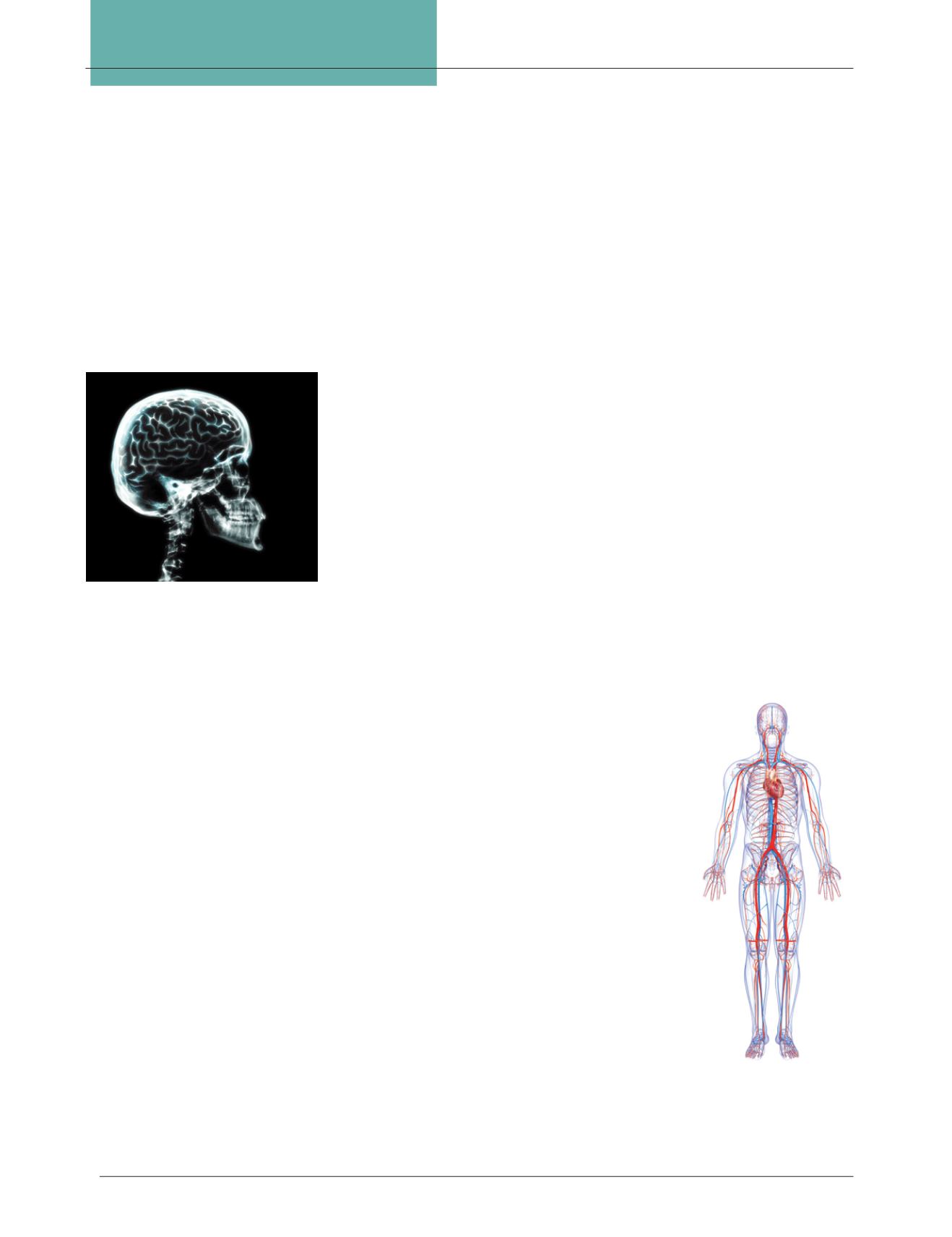
14
Vol. 66, No. 3 2015
Northeast Florida Medicine
Patient Page
Patient Page
Carotid Angioplasty and Stenting
Reprinted with permission from an article from Mayo Clinic found at
Mayo Foundation for Medical Education and Research (MFMER). All rights reserved.
Carotid angioplasty is a procedure that opens clogged arteries to prevent or treat stroke. The carotid arteries are located on
each side of your neck and are the main arteries supplying blood to your brain. The procedure involves temporarily inserting
and inflating a tiny balloon where your carotid artery is clogged to widen the artery.
Carotid angioplasty is often combined with the placement of a small metal coil called a stent in the clogged artery. The stent
helps prop the artery open and decreases the chance of it narrowing again. Carotid angioplasty and stenting may be used when
traditional carotid surgery isn’t feasible or is too risky.
Why it’s done
Carotid angioplasty and stenting may be an appropriate stroke treatment or
stroke prevention option if:
• You have a carotid artery with a 70 percent blockage or more, especially if
you’ve had a stroke or stroke symptoms, and you aren’t in good enough health to
undergo surgery — for example, if you have severe heart or lung disease or had
radiation for neck tumors
• You’ve already had a carotid endarterectomy and are experiencing new
narrowing after surgery (restenosis)
• The location of the narrowing (stenosis) is difficult to access
with endarterectomy
In some cases, traditional carotid surgery (carotid endarterectomy) may be advised
to remove the buildup of plaques (fatty material) that is narrowing the artery. In
other cases, angioplasty and stenting may be a better option.
Risks
• Stroke or ministroke (transient ischemic attack, or TIA)
• New narrowing of the carotid artery (restenosis)
• Blood clots
• Bleeding
Results
For most people, carotid angioplasty and stenting increase blood flow through the previously
blocked artery and reduce the risk or symptoms of stroke.
Seek emergency medical care
if
your signs and symptoms return, such as trouble walking or speaking, numbness on one side
of your body, or other symptoms similar to those you had before your procedure, contact your
doctor immediately.
Lifestyle changes will help you maintain your good results:
• Don’t smoke.
• Lower your cholesterol and triglyceride levels.
• Maintain a healthy weight.
• Control other conditions, such as diabetes, high blood pressure and sleep apnea.
• Exercise regularly.
v


